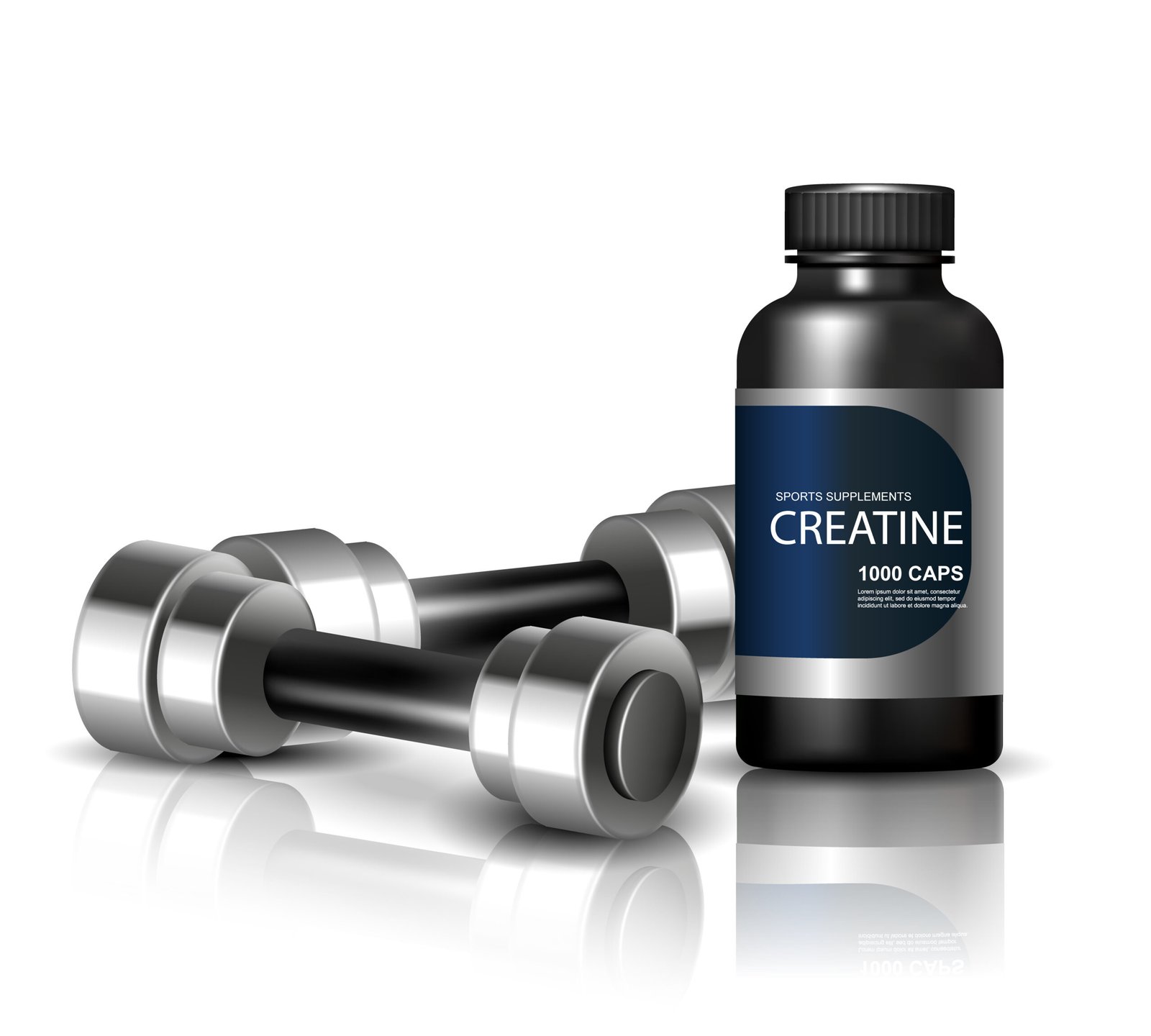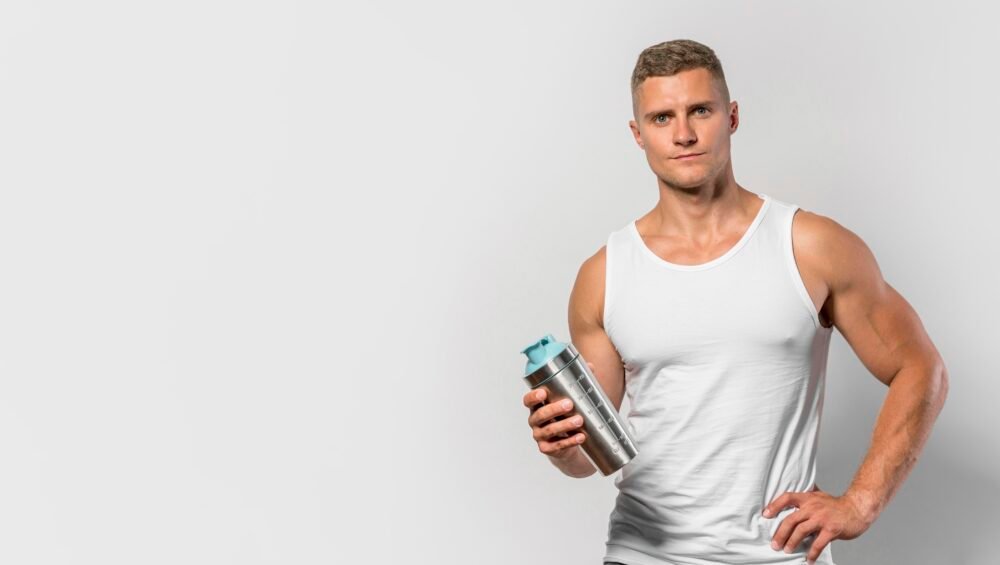Best creatine supplements available in USA in 2025.
TL;DR — Quick takeaways
- Creatine monohydrate (micronized) is still the gold standard: most robust evidence, cheapest cost-per-gram, and widely accepted safety profile. MDPIPMC
- Expect meaningful strength gains when creatine is combined with resistance training (meta-analyses show measurable increases in upper- and lower-body strength). MDPI
- Cognitive benefits are promising but mixed — benefits show up in older adults, vegans, and energy-deprived brains; results in young healthy adults are inconsistent. PMC
- Safety: creatine monohydrate is well-studied and generally safe for healthy people when used at recommended doses; authoritative reviews and ISSN position stands continue to support this. BioMed CentralTaylor & Francis Online
- Market trend: US creatine market is growing fast (hundreds of millions USD in 2024; strong CAGR forecast through 2030) with new formats (gummies, RTD, beadlets), more third-party certification, and industry consolidation. Grand View ResearchGlobal Market Insights Inc.
Why this guide — and how it’s different
Many “best creatine” articles recycle retailer lists and product photos. This guide goes deeper: I use the latest meta-analyses and position statements, cross-check market reports, prioritize third-party testing & ingredient traceability (Creapure, NSF, Informed-Sport), and translate all of that into a practical, evidence-based shopping and usage checklist. Where press pieces give picks, I judge picks by scientific backing, purity, traceability, and value — not by marketing copy alone. MDPIU.S. Food and Drug AdministrationNSF International
Check also: a simple guide for US gym supplements
Short primer — how creatine works (so you can evaluate claims)
Creatine is a small molecule your body makes from amino acids and stores as creatine/phosphocreatine in muscle and brain. During short, intense efforts (sprinting, heavy lifting), phosphocreatine rapidly regenerates ATP — the immediate energy currency — letting you do a bit more, recover slightly faster, and train harder over time. That biochemical mechanism is why creatine reliably helps with short high-intensity performance, power and gains when paired with training. MDPI
What the science says (the newest, highest-impact findings)
Strength & muscle
Recent meta-analyses (2023–2024) show consistent, statistically significant improvements in maximal strength (bench, squat) and small to moderate gains in lean mass when creatine is taken with resistance training. Quantified examples from pooled analyses: multi-kg improvements in compound lifts versus placebo in adults under 50. MDPIPubMed

Dosing & protocol
Two evidence-backed options:
- Loading: ~0.3 g/kg/day (≈20 g/day split into 4 doses) for 5–7 days, then maintenance 3–5 g/day. This saturates muscle fastest.
- No-load: 3–5 g/day will saturate muscle stores in ~3–4 weeks and avoids temporary water gain some people dislike. Both are supported; pick what fits you. PMC+1
Cognitive & clinical uses
Systematic reviews in 2024/2025 show promising cognitive effects in older adults, sleep-deprived people, vegetarians, and some clinical contexts — but null or mixed effects in healthy young adults under normal conditions. Bottom line: cognition is a plausible secondary benefit, but more targeted trials are needed. PMCPubMed
Safety
Large bodies of work and position statements (ISSN and others) report no consistent evidence of kidney damage in healthy users at recommended doses and conclude creatine is well-tolerated for short and long term use in healthy populations. As always, people with existing kidney disease or on certain medications should consult a clinician. BioMed CentralTaylor & Francis Online
Forms on the market — what matters (and what’s mostly marketing)
- Creatine Monohydrate (micronized) — the evidence winner. Best studied, most cost-effective, and generally the recommended starting point. PMC
- Micronized monohydrate — same molecule, smaller particle size for easier mixing. Preferable for taste/solubility.
- Creapure® (AlzChem) — a trademarked, tightly controlled German creatine monohydrate; widely used as a quality signal and backed by a GRAS notice to the FDA. If you value traceability, look for Creapure on the label. CreapureU.S. Food and Drug Administration
- Creatine HCl, nitrate, buffered, ethyl ester, chelates — often marketed for better solubility or absorption. Current comparative evidence does not show clear superiority over monohydrate for most users; HCl may reduce GI issues for some people but carries a higher price. Buy these only for specific tolerability reasons. PMCLegion Athletics
- Formats: powder (dominant), capsules, gummies, RTDs, soft chews. Powders remain best value; gummies/RTDs trade convenience for price and often add sugars/flavors.
Quality & safety signals to look for (critical)
- Simple ingredient list — ideally only creatine monohydrate (and maybe a flow agent like silica). Avoid multi-ingredient proprietary blends unless you want those extras.
- Third-party certification — NSF Certified for Sport, Informed-Sport/Informed-Choice, or Labdoor testing. These lower the risk of contamination and verify label accuracy. NSF/Informed-Sport listings are searchable publicly. NSF InternationalWe Test You Trust
- Creapure seal / traceable source — not required, but useful for peace of mind (Creapure is made by AlzChem and has GRAS paperwork). CreapureU.S. Food and Drug Administration
- Batch/lot numbers and COA (certificate of analysis) — brands that publish COAs or respond quickly to COA requests are better.
- Transparent dosing — 5 g per scoop clearly stated; avoid hidden low-dose servings.
- Price per gram — compute to compare value: price ÷ (servings × grams per serving).
Market analysis (USA) — 2024–2025 snapshot & trends
- Market size & growth: Market research firms estimate the U.S. creatine market at several hundred million USD in 2024 (reports vary: e.g., Grand View Research and industry trackers), with aggressive projected CAGR and revenue forecasts into 2030 as creatine expands beyond bodybuilding into mainstream wellness (cognitive health, aging, women’s health). Expect continued rapid growth and M&A activity as brands consolidate and add specialty lines. Grand View ResearchGlobal Market Insights Inc.
- Drivers: mainstream acceptance driven by: robust science, awareness of cognitive/aging benefits, increased female consumer uptake, DTC (direct-to-consumer) brands and influencer marketing, and novel formats (gummies, RTD). The GuardianHealth
- Retail channels: Amazon + DTC sites dominate volume; specialty retailers and sports stores emphasize certified/skewed-toward athletes formulas. Labdoor and similar third-party testers have become influential in purchase decisions. labdoor
Check also: where to buy best creatine in USA
My top picks (categories & why) — shortlist based on purity, testing, evidence, value
I focused picks on: (1) proven ingredient (creatine monohydrate), (2) third-party testing / Creapure when available, (3) price/value, and (4) consumer/independent lab rankings.
- Best overall (science + traceability): Creapure® micronized creatine monohydrate — any reputable brand using Creapure (examples favored in press: Gnarly, Thorne, Legion). Creapure provides traceability and consistent purity. CreapureMen’s Health
- Best value (bulk powder): Unflavored micronized creatine monohydrate from transparent brands (many Labdoor A+ picks) — cheap per gram and simple label. Check Labdoor ranking pages for top value picks. labdoor
- Best certified (for athletes): NSF Certified for Sport products (Thorne, Momentous, some 1st Phorm products) — pick these if you compete or want absolute assurance. ThorneMomentous
- Best for sensitive stomachs: Creatine HCl formulations — some users tolerate HCl better; evidence for superior gains is weak, so use HCl for GI reasons, not performance superiority. PMCLegion Athletics
- Best convenient format (on the go): Creatine gummies / chewables — novel and convenient. They cost more per gram; rely on independent lab scores because flavored products add ingredients. (Industry reviewing sites and Labdoor list some high-ranked gummies.) Garage Gym Reviewslabdoor
(Specific brand recommendations often overlap with Labdoor, EatingWell, Men’s Health and Healthline lists — I cross-checked those lists and elevated products that had quality signals above.) labdoorEatingWellMen’s HealthHealthline
Buying checklist — how to pick the single best tub for you
- Active ingredient: creatine monohydrate (micronized) — 5 g scoop.
- Purity: single ingredient, no junk fillers or hidden blends.
- Certification: NSF Certified for Sport or Informed-Sport if you care about banned-substance testing. NSF International
- Source / traceability: Creapure or brand transparency about supplier. Creapure
- Price per gram: do the math. Bulk powder almost always wins.
- Mixability / taste: micronized for mixability; unflavored if you want to mix into shakes.
- Return policy & COA availability: better brands publish lab tests or provide them on request.
Practical usage tips
- Standard routine: 3–5 g/day (skip loading) works for most. Loading (20 g/day split for 5–7 days) saturates faster. PMC
- Timing: timing is flexible — take daily with a meal or near workouts; pairing with carbs/protein can slightly improve uptake. PMC
- Hydration & weight: expect a small, short-term water weight increase (intracellular), not fat gain.
- Stacking: creatine stacks well with protein, beta-alanine, caffeine (be mindful of timing), but evaluate blended preworkouts closely for unnecessary stimulants.
- Who might avoid it: people with known renal disease or on nephrotoxic drugs — consult your physician.
Comparing this guide to mainstream press & review lists
- Press lists (Men’s Health, Healthline, Verywell, EatingWell) often recommend many of the same brands, but they typically focus on product taste, value or a shallow test battery. Men’s HealthHealthlineVerywell HealthEatingWell
- What I added / improved:
- Up-to-date science synthesis — I cite 2023–2024 meta-analyses and 2025 position updates rather than relying solely on marketing or older single studies. MDPITaylor & Francis Online
- Market context — concrete U.S. market figures and trends to explain product innovation and price pressure. Grand View Research
- Product triage by objective signals — third-party testing, GRAS/Creapure traceability, and cost-per-gram calculations are front and center (not afterthoughts). U.S. Food and Drug AdministrationNSF International
- Balanced view on novel forms — HCl, nitrate, gummies: explained pros/cons and evidence rather than hype. PMC

Final recommendations (short)
- If you want one jar for life: buy a micronized creatine monohydrate (Creapure if you want extra traceability), 5 g serving — check price per gram and COA/NSF status. CreapureNSF International
- If you compete: prioritize NSF Certified for Sport / Informed-Sport labeled products. NSF International
- If you get GI issues from monohydrate: try a creatine HCl product for tolerability; monitor effects. PMC
Sources & further reading (selected)
- Recent strength meta-analysis (2024). MDPI
- Systematic review/meta-analysis on cognitive effects (2024). PMC
- ISSN position stand and safety literature. BioMed CentralTaylor & Francis Online
- U.S. market analysis (Grand View Research). Grand View Research
- Independent product testing & rankings (Labdoor creatine rankings). labdoor
- Creapure (AlzChem) and FDA GRAS notice. CreapureU.S. Food and Drug Administration
- Third-party certification (NSF, Informed-Sport). NSF InternationalWe Test You Trust


2 Comments
[…] formulations of Genuine Health’s BCAA+Creatine include added electrolytes to replenish hydration and maintain performance during intense […]
[…] Worth to read: Best creatine supplements available in USA today […]